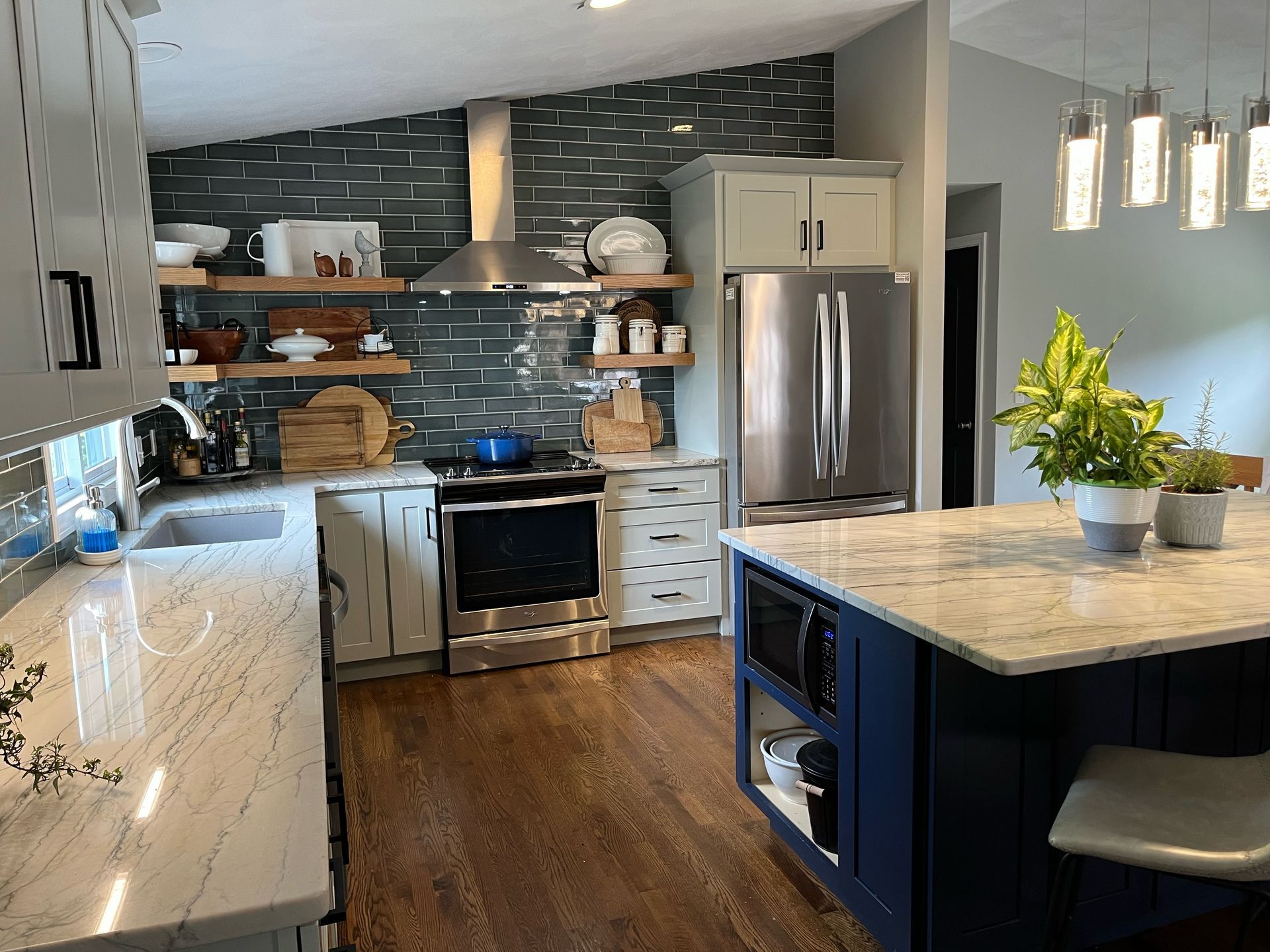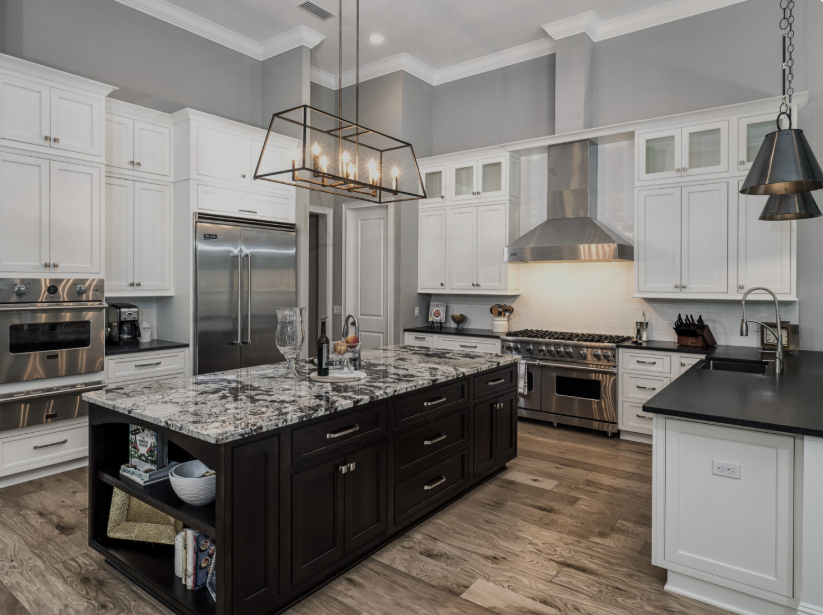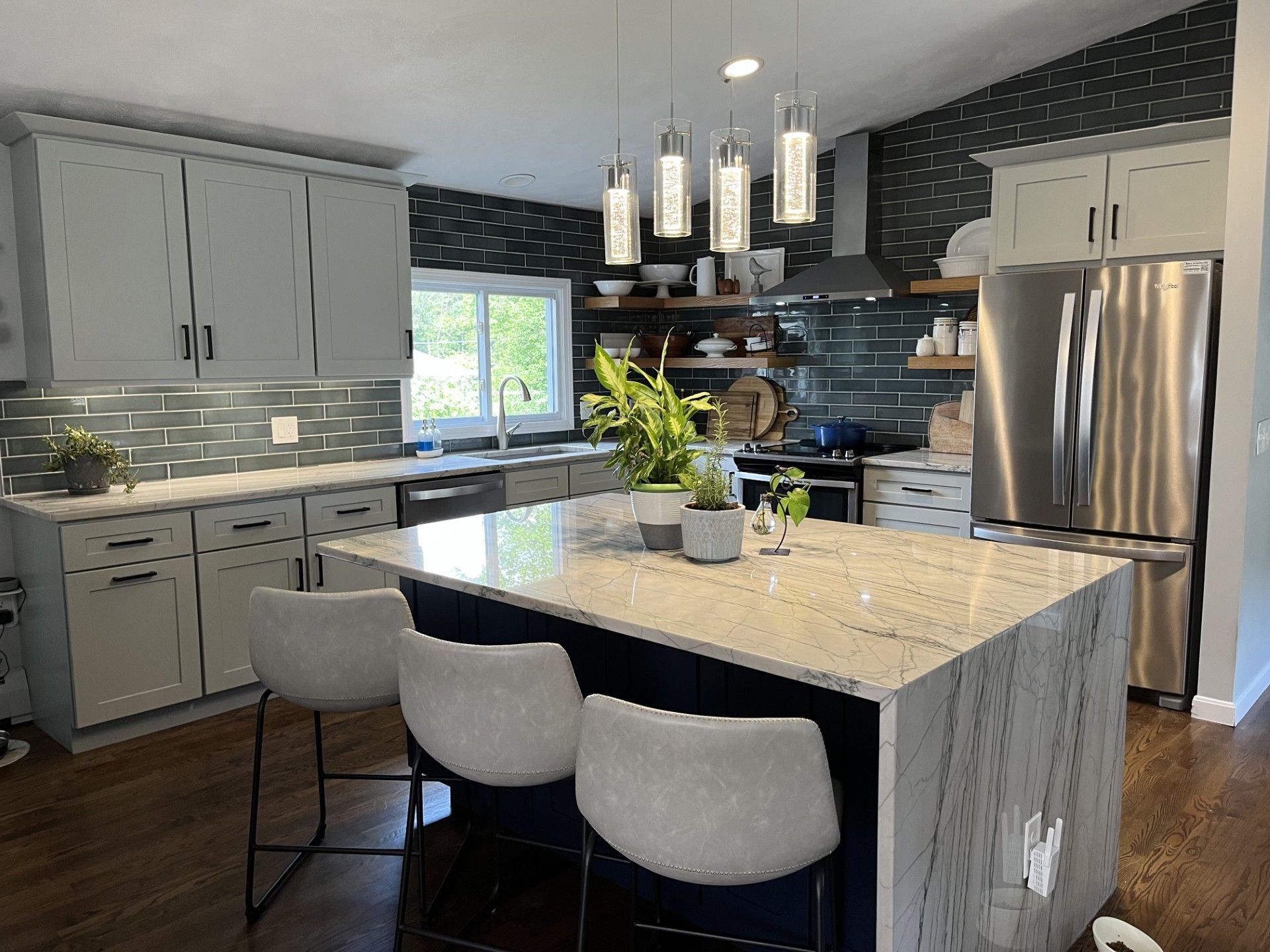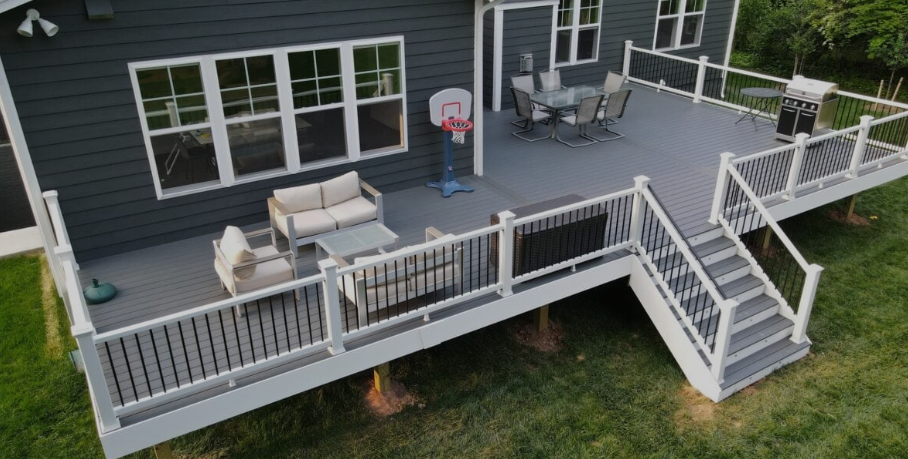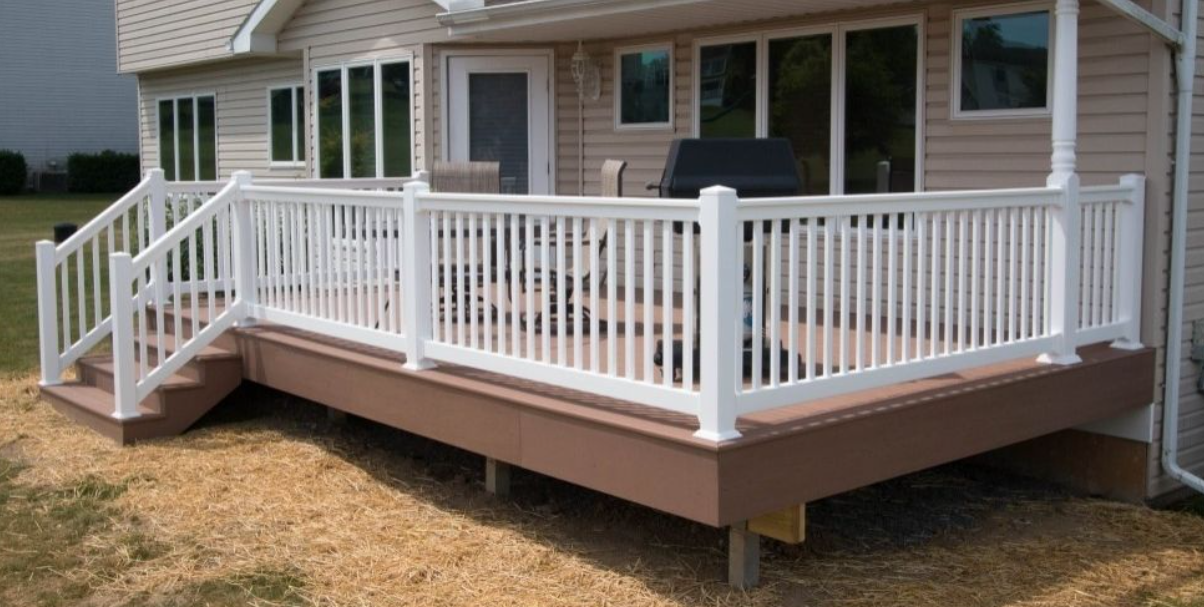Rustic Patio Designs for Rhode Island Homes
The best rustic patio designs for Rhode Island homes blend natural stone materials, weathered wood elements, and native plantings that complement the Ocean State's colonial architecture and coastal landscape.
Top Rustic Patio Elements for RI Homes:
- Natural bluestone: Local quarried stone with authentic New England character
- Reclaimed wood features: Weathered barn wood, driftwood accents
- Native stone walls: Fieldstone or granite dry-stacked retaining walls
- Colonial-inspired layouts: Simple geometric patterns, brick borders
- Rustic fire features: Stone fire pits, outdoor fieldstone fireplaces
- Native plant integration: Ferns, hostas, and woodland wildflowers
Design Styles That Work in Rhode Island:
- New England farmhouse rustic
- Coastal cottage casual
- Colonial stone and timber
- Maritime weathered elegance
Understanding Rustic Design in Rhode Island
Regional Material Characteristics
Native Rhode Island Stone:
- Westerly granite: Durable, weather-resistant, classic New England appearance
- Local bluestone: Sedimentary stone with natural cleft surface, excellent for patios
- Fieldstone: Glacial erratics scattered throughout RI, perfect for walls and borders
- Beach stone: Rounded granite and quartz stones from coastal areas
Traditional Wood Elements:
- Eastern white pine: Historic RI timber, weathers to silvery gray
- Red oak: Durable hardwood, traditional in colonial construction
- Atlantic white cedar: Coastal species, naturally rot-resistant
- Reclaimed chestnut: From historic barns, adds authentic character
New England Farmhouse Rustic Style
Material Palette and Layout
Primary Materials:
- Weathered bluestone: Large format stones (24"x36" or larger) with natural cleft finish
- Reclaimed barn wood: Silvered chestnut or pine beams for pergola posts and benches
- Fieldstone borders: Dry-stacked walls 18-24 inches high for definition
- Gravel pathways: Crushed stone or pea gravel for informal circulation
Layout Characteristics:
- Generous proportions: Large, simple rectangular shapes reflecting farmhouse scale
- Multiple outdoor rooms: Dining area, seating area, perhaps kitchen garden space
- Practical circulation: Wide pathways accommodate wheelbarrows and garden equipment
- Integration with existing structures: Connect to house foundation materials and style
Farmhouse Rustic Features
Traditional Fire Features:
Fieldstone Fire Pit:
- Materials: Local fieldstone mortared or dry-stacked
- Size: 4-6 feet diameter for family gatherings
- Seating integration: Built-in stone benches or separate rustic furniture
- Safety considerations: Adequate clearance from structures and plantings
Outdoor Fireplace:
- Stone construction: Full fieldstone or bluestone veneer over concrete block
- Chimney design: Traditional New England proportions and materials
- Hearth area: Extended stone apron for safety and aesthetics
- Wood storage: Built-in storage nooks or separate wood shed structure
Rustic Furniture Integration:
Built-in Stone Seating:
- Retaining wall integration: Double-duty walls provide seating and grade separation
- Cushion considerations: Weather-resistant fabrics in earth tones
- Height specifications: 18-20 inches for comfortable seating
- Arm rest options: Extended cap stones for arm rests
Reclaimed Wood Tables:
- Material selection: Weathered barn beams or ship timber
- Base options: Stone pedestals or wrought iron supports
- Size planning: 8-10 feet long for extended family gatherings
- Weather protection: Annual oiling or natural weathering approach
Coastal Cottage Rustic Design
Maritime-Inspired Elements
Weathered Wood Features:
- Driftwood accents: Actual beach-found wood or artificially weathered lumber
- Ship lap siding: On privacy screens, planter boxes, or accent walls
- Rope details: Marine rope railings, plant hangers, or decorative elements
- Weathered finishes: Gray-washed or naturally silvered wood tones
Stone and Shell Integration:
- Beach stone borders: Rounded stones from Rhode Island beaches (where legally collected)
- Shell accents: Quahog shells, scallop shells in decorative applications
- Sea glass details: Incorporated into mortar joints or decorative panels
- Granite boulders: Large rounded stones as sculptural elements
Coastal Plant Palette
Salt-Tolerant Rustic Plants:
Beach Grass (Ammophila arendsii):
- Texture contrast: Soft, flowing grass against hard patio materials
- Authentic coastal character: True Rhode Island shoreline plant
- Low maintenance: Thrives in sandy, salty conditions
- Seasonal interest: Golden color in fall, movement in coastal breezes
Bayberry (Myrica pensylvanica):
- Historic significance: Traditional Rhode Island candle-making plant
- Informal structure: Loose, naturalistic growth habit
- Wildlife value: Berries provide winter bird food
- Salt tolerance: Excellent performance in coastal conditions
Rosa rugosa (Beach Rose):
- Abundant blooms: Pink or white flowers throughout summer
- Hip production: Large orange-red fruits in fall
- Thorny barrier: Natural security screening
- Fragrance: Sweet rose scent enhances patio ambiance
Coastal Color Schemes
Weathered Neutrals:
- Driftwood gray: Primary wood finish color
- Sea glass blue-green: Accent colors in furniture or planters
- Sand beige: Neutral tones for larger surfaces
- Shell white: Crisp contrast color for trim and details
Natural Rust and Patina:
- Weathered steel: Cor-Ten steel planters and fire features
- Copper accents: Patinated copper gutters, planters, or water features
- Iron details: Wrought iron furniture with authentic rust patina
- Brass hardware: Marine brass fittings on gates and furniture
Colonial Stone and Timber Style
Historical Accuracy Elements
18th Century Layout Principles:
- Symmetrical organization: Balanced placement of features around central axis
- Functional geometry: Rectangular patterns reflecting colonial building methods
- Material authenticity: Stone and timber combinations typical of period
- Scale appropriateness: Proportions reflecting colonial-era outdoor spaces
Traditional Construction Techniques:
Dry Stone Walling:
- No mortar construction: Traditional New England field stone technique
- Proper drainage: Gaps between stones allow water infiltration
- Settling accommodation: Structure adapts to ground movement
- Repair simplicity: Individual stones easily replaced or adjusted
Mortared Stone with Lime Pointing:
- Historic mortar recipes: Lime-based mortars matching colonial techniques
- Recessed joints: Traditional "struck" joint profile
- Color matching: Mortar color harmonizing with stone color
- Breathability: Lime mortar allows stone to expand and contract
Colonial-Era Material Combinations
Bluestone and Brick:
- Primary surface: Large bluestone slabs for main patio area
- Border detail: Brick borders in running bond or herringbone pattern
- Step construction: Brick risers with bluestone treads
- Transition areas: Brick used to transition between different stone areas
Timber Frame Elements:
- Pergola construction: Heavy timber posts and beams, traditional joinery
- Beam sizing: 8x8 or 10x10 inch posts, 6x10 or 8x12 inch beams
- Joint details: Mortise and tenon joints with wooden pegs
- Species selection: White oak or chestnut for authenticity
Fire Features and Outdoor Cooking
Rustic Fire Pit Designs
Natural Stone Fire Pits:
Fieldstone Circle Design:
- Stone selection: Varied sizes of local fieldstone
- Mortar vs. dry-laid: Mortared joints for permanence, dry-laid for flexibility
- Interior finish: Fire brick lining for heat protection
- Drainage: Gravel base and weep holes prevent water accumulation
Square Bluestone Design:
- Geometric formality: Clean lines complementing colonial architecture
- Cap stone detail: Flat bluestone caps for seating and surface area
- Corner treatment: Mitered corners or overlapped corner stones
- Size options: 4x4 feet for intimate gatherings, 6x6 feet for larger groups
Outdoor Kitchen Integration
Rustic Outdoor Cooking Areas:
Stone Pizza Oven:
- Traditional dome construction: Fire brick interior, stone veneer exterior
- Chimney integration: Stone chimney matching overall design
- Work surface: Bluestone or granite prep areas
- Wood storage: Built-in wood storage with proper ventilation
Grill Station Design:
- Stone base construction: Fieldstone or bluestone base for built-in grills
- Counter height: 36-inch working height with extended prep areas
- Storage integration: Cabinets or open shelving in base construction
- Utility planning: Gas lines, electrical connections planned during construction
Native Plantings for Rustic RI Patios
Woodland Garden Integration
Shade-Tolerant Native Ferns:
Christmas Fern (Polystichum acrostichoides):
- Evergreen structure: Year-round green color and texture
- Colonial history: Traditional medicinal and decorative use
- Shade preference: Thrives under existing trees or structures
- Low maintenance: Once established, requires minimal care
Cinnamon Fern (Osmundastrum cinnamomeum):
- Dramatic size: Can reach 4-6 feet in favorable conditions
- Seasonal interest: Fertile fronds turn cinnamon color in spring
- Wetland adaptation: Handles Rhode Island's high precipitation
- Native authenticity: Indigenous to RI wetlands and woodlands
Native Wildflower Understory:
Wild Ginger (Asarum canadense):
- Groundcover habit: Heart-shaped leaves form dense carpet
- Shade tolerance: Excellent for north-facing patio areas
- Spring interest: Hidden burgundy flowers at ground level
- Colonial use: Historical medicinal plant
Trout Lily (Erythronium americanum):
- Early spring blooms: Yellow flowers before tree leaf-out
- Mottled foliage: Distinctive spotted leaves
- Naturalizing habit: Forms colonies over time
- Ephemeral beauty: Goes dormant by midsummer
Rustic Perennial Borders
Native Meadow Plants:
Wild Bergamot (Monarda fistulosa):
- Aromatic foliage: Leaves release mint-like fragrance when crushed
- Pollinator favorite: Attracts native bees, butterflies, hummingbirds
- Historical use: Native American medicinal and ceremonial plant
- Cottage garden charm: Informal growth habit suits rustic design
New England Aster (Symphyotrichum novae-angliae):
- Fall spectacular: Purple daisy flowers in September-October
- Native meadow plant: Authentic Rhode Island wildflower
- Monarch butterfly host: Important for butterfly migration
- Informal habit: Loose, naturalistic growth pattern
Regional Variations Across Rhode Island
Providence County Rustic Adaptations
Urban Rustic Challenges:
- Space limitations: Smaller lots require more compact rustic designs
- Utility integration: Working around existing infrastructure
- Noise buffering: Using rustic elements to create sound barriers
- Air quality: Selecting plants tolerant of urban pollution
Clay Soil Adaptations:
- Enhanced drainage: Raised beds and amended soil for plant health
- Stone selection: Materials that handle wet clay soil conditions
- Grading importance: Proper slopes essential for water management
- Maintenance access: Planning for equipment access in dense neighborhoods
Newport County Coastal Rustic
Salt Air Adaptations:
- Material selection: Stones and woods that handle salt spray
- Plant choices: Species evolved for coastal conditions
- Metal protection: Galvanized or stainless steel hardware
- Maintenance planning: Regular cleaning to remove salt deposits
Historic District Considerations:
- Preservation guidelines: Designs must complement historic architecture
- Material authenticity: Using period-appropriate materials and techniques
- Scale sensitivity: Proportions appropriate to historic building sizes
- Review processes: Planning for historic district approval procedures
Washington County Rural Rustic
Agricultural Heritage Integration:
- Farm building materials: Incorporating elements from agricultural structures
- Larger scale possibilities: More space allows for generous rustic features
- Native habitat integration: Connecting with existing woodlands and meadows
- Wildlife considerations: Designing for coexistence with rural wildlife
Natural Setting Enhancement:
- Minimal site disturbance: Working with existing topography
- Native plant emphasis: Using indigenous species almost exclusively
- Seasonal access: Planning for muddy spring conditions
- Equipment considerations: Access for maintenance and deliveries
Lighting for Rustic RI Patios
Authentic Lighting Solutions
Period-Appropriate Fixtures:
- Lantern styles: Colonial and early American inspired designs
- Material coordination: Wrought iron, copper, or weathered brass
- Flame simulation: LED bulbs that mimic candle or gas flame appearance
- Scale appropriate: Fixtures sized for outdoor use but not overwhelming
Natural Integration:
- Tree mounting: Fixtures attached to mature trees where appropriate
- Stone integration: Lights built into stone walls or features
- Path definition: Low-level lighting for safety without light pollution
- Dark sky friendly: Designs that minimize upward light spillage
Rustic Lighting Techniques
Fire-Based Lighting:
- Torch lighting: Tiki torches or colonial-style torches for ambiance
- Fire bowl accent: Small fire bowls on stone pedestals
- Candle integration: Protected candle niches in stone walls
- Oil lamp options: Traditional oil lamps for authentic historical feel
Solar and Low-Voltage Options:
- Hidden solar panels: Panels concealed but lights appear traditional
- Low-voltage safety: 12-volt systems safer around water features
- Timer controls: Automatic operation without modern switch visibility
- Battery backup: Systems that work during power outages
Seasonal Considerations for Rustic Patios
Winter Design Elements
Cold Season Appeal:
- Evergreen structure: Plants that provide winter interest
- Stone thermal mass: Materials that store and release solar heat
- Wind protection: Screening elements that reduce wind chill
- Snow load planning: Structures designed for New England snow loads
Winter Activity Accommodation:
- Fire feature emphasis: Outdoor fires for cold-weather gathering
- Covered areas: Pergolas or overhangs for weather protection
- Storage planning: Space for winter equipment and furniture storage
- Ice safety: Textured surfaces and proper drainage prevent ice formation
Spring Through Fall Optimization
Growing Season Design:
- Planting bed integration: Gardens that enhance rustic character
- Seasonal color progression: Plants selected for changing seasonal interest
- Maintenance access: Paths and storage for garden maintenance
- Harvest integration: Space for herb gardens or small vegetable plots
Entertainment Planning:
- Flexible furniture: Pieces that can be rearranged for different activities
- Cooking accommodation: Outdoor kitchen or grilling areas
- Guest circulation: Traffic flow patterns for entertaining
- Weather backup: Covered areas for unexpected weather
Budget Planning for Rustic RI Patios
Cost-Effective Rustic Elements
DIY-Friendly Features:
- Dry-laid stone paths: No mortar required, accessible to homeowners
- Simple fire pit construction: Basic stone circle within most skill levels
- Reclaimed wood projects: Benches, planters, decorative elements
- Native plant installation: Lower cost than exotic species, easier establishment
Professional-Required Elements:
- Mortared stone work: Requires masonry skills and proper foundation
- Gas fire features: Need licensed gas fitter for safety
- Electrical work: Lighting requires licensed electrician
- Large stone placement: Heavy equipment needed for boulders and large slabs
Investment Prioritization
Phase 1 - Foundation Elements:
- Basic patio surface: Primary stone or brick installation
- Essential drainage: Proper grading and base preparation
- Safety features: Adequate lighting and stable walking surfaces
- Budget allocation: 60-70% of total project budget
Phase 2 - Character Features:
- Fire feature: Central focal point for gathering
- Seating elements: Built-in or coordinated furniture
- Planting beds: Native plants and rustic landscaping
- Budget allocation: 20-30% of total project budget
Phase 3 - Refinement Details:
- Decorative elements: Accessories and finishing touches
- Enhanced lighting: Accent and mood lighting
- Specialty features: Water elements, outdoor art, unique materials
- Budget allocation: 10-15% of total project budget
Maintenance Requirements for Rustic Patios
Seasonal Maintenance Tasks
Spring Preparation:
- Stone cleaning: Remove winter debris and organic stains
- Joint maintenance: Replenish sand or repoint mortar as needed
- Plant care: Prune dead wood, divide perennials, mulch beds
- Fire feature preparation: Clean fire pits, check gas connections
Summer Upkeep:
- Weed management: Hand-pull weeds from stone joints
- Plant maintenance: Deadhead flowers, water during dry spells
- Furniture care: Clean and treat wood furniture, cushion maintenance
- Safety checks: Ensure lighting works, inspect structural elements
Fall Preparation:
- Leaf management: Remove leaves that can stain stone surfaces
- Plant preparation: Cut back perennials, protect tender plants
- Fire feature readiness: Stock firewood, clean chimney if applicable
- Winter storage: Store removable furniture and accessories
Long-Term Care Considerations
Stone Surface Maintenance:
- Sealing schedule: Natural stone may benefit from periodic sealing
- Stain prevention: Prompt cleanup of spills prevents permanent staining
- Joint integrity: Regular inspection and maintenance of mortar joints
- Surface protection: Use appropriate cleaners that won't damage stone
Wood Element Care:
- Weathering acceptance: Allow natural aging or maintain with annual treatments
- Structural inspection: Check for insect damage, rot, or structural issues
- Replacement planning: Anticipate 15-20 year replacement cycle for exposed wood
- Species selection: Choose naturally rot-resistant species for longevity
Our team understands the importance of using appropriate materials, traditional construction techniques, and proper installation methods that ensure your rustic patio will develop the beautiful patina and character that only comes with time and weather. From sourcing local bluestone and fieldstone to incorporating reclaimed timber elements and native plantings, we create outdoor spaces that feel both historically authentic and perfectly suited to modern living.
Contact us today to discuss how we can bring the enduring beauty of rustic design to your Rhode Island property.

